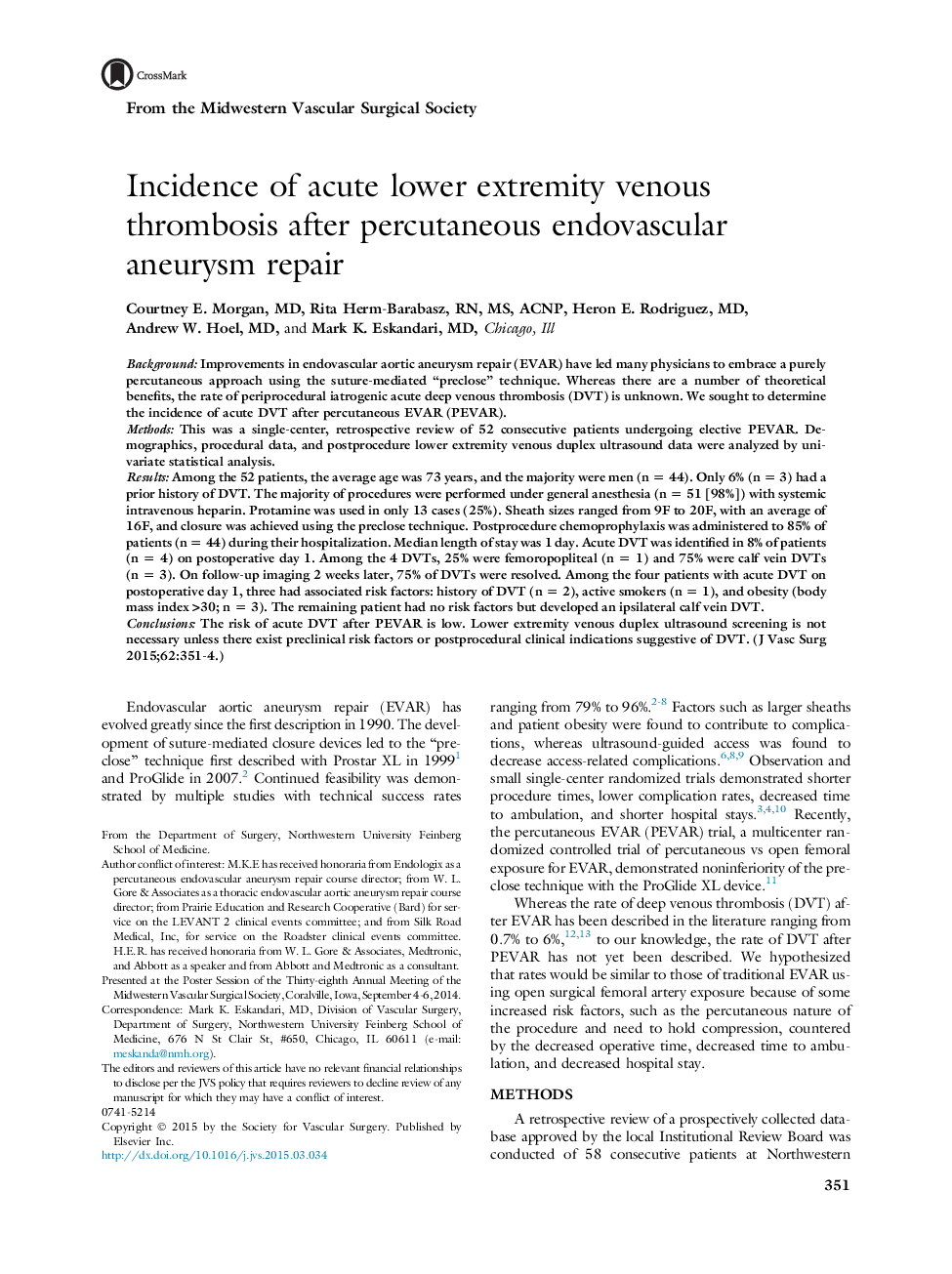| کد مقاله | کد نشریه | سال انتشار | مقاله انگلیسی | نسخه تمام متن |
|---|---|---|---|---|
| 5993763 | 1179822 | 2015 | 4 صفحه PDF | دانلود رایگان |
BackgroundImprovements in endovascular aortic aneurysm repair (EVAR) have led many physicians to embrace a purely percutaneous approach using the suture-mediated “preclose” technique. Whereas there are a number of theoretical benefits, the rate of periprocedural iatrogenic acute deep venous thrombosis (DVT) is unknown. We sought to determine the incidence of acute DVT after percutaneous EVAR (PEVAR).MethodsThis was a single-center, retrospective review of 52 consecutive patients undergoing elective PEVAR. Demographics, procedural data, and postprocedure lower extremity venous duplex ultrasound data were analyzed by univariate statistical analysis.ResultsAmong the 52 patients, the average age was 73 years, and the majority were men (n = 44). Only 6% (n = 3) had a prior history of DVT. The majority of procedures were performed under general anesthesia (n = 51 [98%]) with systemic intravenous heparin. Protamine was used in only 13 cases (25%). Sheath sizes ranged from 9F to 20F, with an average of 16F, and closure was achieved using the preclose technique. Postprocedure chemoprophylaxis was administered to 85% of patients (n = 44) during their hospitalization. Median length of stay was 1 day. Acute DVT was identified in 8% of patients (n = 4) on postoperative day 1. Among the 4 DVTs, 25% were femoropopliteal (n = 1) and 75% were calf vein DVTs (n = 3). On follow-up imaging 2 weeks later, 75% of DVTs were resolved. Among the four patients with acute DVT on postoperative day 1, three had associated risk factors: history of DVT (n = 2), active smokers (n = 1), and obesity (body mass index >30; n = 3). The remaining patient had no risk factors but developed an ipsilateral calf vein DVT.ConclusionsThe risk of acute DVT after PEVAR is low. Lower extremity venous duplex ultrasound screening is not necessary unless there exist preclinical risk factors or postprocedural clinical indications suggestive of DVT.
Journal: Journal of Vascular Surgery - Volume 62, Issue 2, August 2015, Pages 351-354
